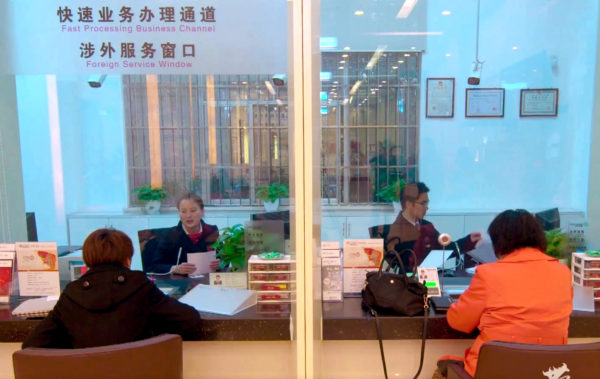◎ Guangfa is the latest of several Chinese banks to be caught up in fraudulent business practices in recent years.
China’s banking regulator issued its highest-ever fine to China Guangfa Bank Co (722 million yuan, or about $109 million) earlier this month.
Guangfa is the latest of several Chinese banks to be caught up in fraudulent business practices in recent years. For instance, there were seven major cases of bank scams involving over 10 billion yuan in 2016 alone.
The Guangfa case: In December 2014, two companies under Guangdong Cosun Group privately issued two bonds worth about 1.1 billion yuan on the Guangdong Equity Exchange. These bonds were later sold on Zhaocaibao, an online wealth management platform ran by Ant Financial Services Group. Ant Financial is an affiliate of the Alibaba Group.
Zheshang Property and Casualty Insurance Co, one of the Cosun Group companies, wrote insurance policies on the bonds guaranteeing to repay investors in the event of a default. Cosun chairman Wu Ruilin also made a personal guarantee to Zheshang, and Guangfa Bank’s Huizhou branch issued guarantees for the bonds.
On Dec. 20, 2016, Zhaocaibao asked Zheshang to repay investors after the bonds defaulted. After Zheshang went to Guangfa Bank to claim the insurance money, Guangfa said that the guarantee documents, as well as the official and personal seals, were not genuine.
From one perspective, the series of business transactions were perfectly normal—a private company guaranteeing its bonds through an insurance company with an agreement with a Chinese bank. But once the bonds defaulted, the Guangfa case appeared to be yet another typical case of chaotic financial arbitrage by mainland Chinese financial institutions.
In the words of China’s banking regulator: “This is a major case of criminal collusion between the bank’s staff with outsiders, and straddled across different companies, industries, and markets. Huge sums of money were involved, many companies were implicated, and the impact on society was terrible.”
Related cases:
2016
Regulators uncovered seven major cases of bank scams involving funds of over 10 billion yuan.
| Breakdown of fraud cases involving banks in 2016 (in billions of yuan) | ||
| Bank | Amount | |
| 1 | Agricultural Bank of China | ¥3.91 |
| 2 | China Citic Bank, Lanzhou Branch | ¥0.97 |
| 3 | Bank of Tianjin, Shanghai Branch | ¥0.79 |
| 4 | Bank of Ningbo, Shenzhen Branch | ¥3.20 |
| 5 | China Guangfa Bank | ¥0.90 |
| 6 | Industrial and Commercial Bank of China, Langfang Branch | ¥1.30 |
| 7 | Bank of Suzhou | ¥0.45 |
2017
June 30: Electronics appliance maker Midea Group Co announced that its subsidiary suffered 1 billion yuan in losses in a fraudulent wealth management product case, and expects to make losses this year.
July 2: Chinese media reported a fraudulent negotiable instrument case involving 9.9 billion yuan. Many banks were victims of the fraud, and their total losses amounted to 900 million yuan.
July 7: Chinese media reported a fraudulent bank drafts case that saw nine banks lose 1.1 billion yuan and led to a wave of lawsuits.
Why it matters: In November, Beijing announced that foreign investors can now own a controlling stake in Chinese banks and other financial institutions. However, Chinese banks have long exploited regulatory loopholes and resorted to malpractice and fraud. Chinese regulators have been clamping down hard on wayward banks and financial institutions, but regulation alone cannot overcome the moral vacuum in the banking sector.
Our take: We believe that it is immensely risky for overseas investors to become stakeholders in China’s banks and other financial institutions.












